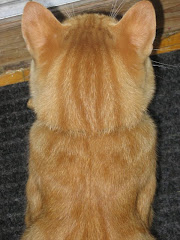
Mushrooms are no longer an extra topping for pizza, or another ingredient to toss into a salad - they are the choice of many cooks for a variety of dishes. Today, the produce sections of most supermarkets carry many kinds of mushrooms that weren't there in the past. We are exposed to a fascinating array of shapes, flavours and textures as these miracles of nature conquer our creativity from sautés to grills.
Commonly considered a vegetable, mushrooms are actually fungi that thrive in the dark. They have no roots or seeds, bear no flowers, contain no chlorophyll, and they come in myriad colours, shapes and sizes. But once they're gathered, about half of their nutritional value is lost within four days, so they should be consumed as soon as possible. If you cannot consume them right away, store them in a paper bag placed within a perforated plastic bag on the shelf of your refrigerator. This way they will stay dry, breathe and remain fresh longer.
Mushrooms already contain a lot of moisture, so resist the temptation to wash them. Instead, wipe each one gently with a damp paper towel or a mushroom brush (available at cooking stores). Separate the caps from tough stems, which you can use to enhance the flavour of soups or stews.
Most wild and exotic mushrooms can cost as much per pound as an expensive cut of beef. The good thing is they don't weigh much, so a little goes a long way. Even the ordinary button mushrooms add a delicious earthiness to dishes. Moreover, mushrooms are naturally fat-free, cholesterol-free, low in calories and in sodium. Studies claim that most mushrooms contain heart-healthy potassium and pantothenic acid as well as being good sources of three B-complex vitamins-riboflavin, niacin and the antioxidant selenium.
Varieties differ in flavour and texture, but you can't go wrong sautéing almost any type of mushroom in olive oil with onion and garlic - mushrooms' best allies. Don't forget a splash of wine, the aroma of this union is simply divine. Besides marrying well with garlic, onion, olive oil and fresh herbs, these little fungi add big flavour to many dishes from grilled meats and stir-fries to pastas and risottos, and they taste great in soups, creamy sauces and omelettes.
Large mushroom caps can be filled with tasty fillings such as seasoned bread crumbs, chopped onions and peppers or cooked spinach and cheese. I like sautéeing the chopped stems with shallots and red peppers in olive oil, seasoned with salt, pepper and Italian herbs. This makes a great stuffing for the portobello caps which go into a 350-degree oven for 12-15 minutes before serving.
Here are some of the more popular types of mushrooms appearing more frequently in the vegetables aisles:
Cremini mushrooms are also known as Italian, or coffee mushrooms. They are a variety of button mushrooms with a deeper, dark brown colour
Portobello are mature cremini mushrooms with a wide, flat cap exposing their dark, almost black gills. You can buy them with or without their stems intact, but usually stems don't have much use. Portobellos make an ideal meat substitute for vegetarians because of their meaty flavour, and their firm, strong texture stands intact in grilling, roasting and tempuras.
Enoki is sometimes sold as "snowcap" because of its pure white colour. They come in clusters with long, stringy stems supporting tiny caps and are good for sprinkling on salads or in soups which don't require much cooking.
Oyster mushrooms have a chewy, soft and thick texture and a mild taste. They are called so because their caps resemble oysters shells. Their colours may vary from off-white to pink to yellow or grayish-brown.
Shiitake have been cultivated in Japan for more than a thousand years. They are grown on oak logs. Their long stems are not edible but the caps are very flavourful when they're cooked. They're sold fresh or dried and sealed in plastic bags. In the latter case, soak them in warm water for a couple of hours before using and use the liquid they were soaked in to flavour the dish.
Chanterelles are considered to be among the most easily accessible and flavourful of all exotic mushrooms. You can identify them by their trumpet-like shapes and pale yellow to reddish orange colours.
Morels are one of the more expensive mushrooms. The cone shaped brown, hollow cap bearing a honey comb-like design is a give away. Their stems tend to be tough, but their caps are ideal for dishes where a little goes a long way for an earthy, smoky flavour.
By substituting exotic, firm-textured mushrooms for the familiar white ones, you'll likely "kick your recipe up a notch." Isn't it time to bring these fungi out of the dark into the limelight and start enjoying a taste of the wild?
~~~~~~~~~~







































